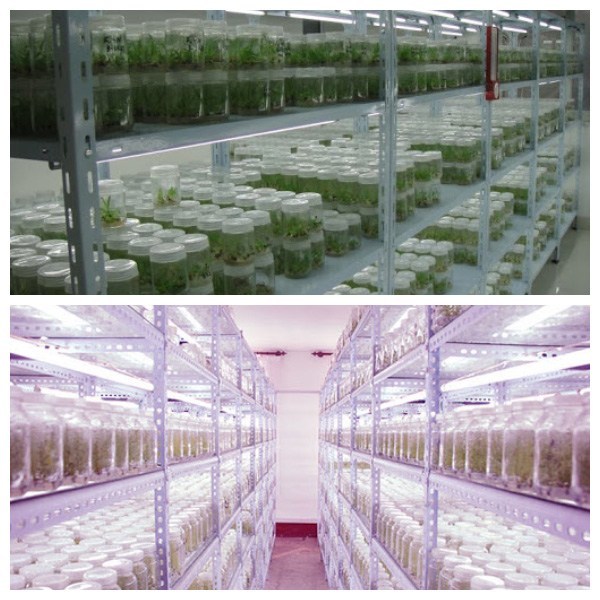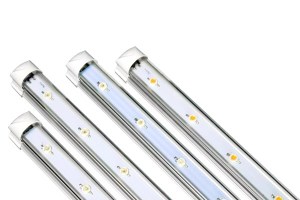
Now more and more agricultural companies, farmers start indoor seedlings, so is it useful to use LED grow lights for seedlings? Below I have collected some information about using LED plant lights to raise seedlings.
Do Seedlings Need Light?
Germinated seeds are no longer seeds, but seedlings, miniature plants. The most important thing to consider and provide is sufficient plant light. Seedlings require more light than fully grown plants, ideally up to 16-18 hours per day. Seeds sown in winter may require additional light.
Are LED Grow Lights Good For Growing Seedlings?
Compared with compact fluorescent lamps, LED plant lights consume less energy and generate less heat, thereby reducing costs and simplifying temperature control in enclosed environments. Equipped with full-spectrum LED lightss (which do not look purple), you can grow seedlings, multiply plants and grow indoor plants in winter.
How Do You Use LED Grow Lights For Seedlings?
After the seeds have germinated, move the plants under a LED grow light.
The flowering footprint suggestions and hanging height of our VANQ LED grow lights are ideal choices, which can be found under the footprint map on each product page.
Turn on the lights for 16-18 hours a day.
Space the plants so that they will not block to each other, because this will make them grow tall and long.
How Do You Use LED Grow Lights For Seedlings?
12-30 inches – A good rule of thumb is to keep the LED plant light 12-30 inches above the plant. The ideal distance between your plant and the LED light depends on the type of light, power and plant growth stage. If you choose a powerful product, such as 600W LED grow light, the top leaf should be 24-30 inches away from the LED grow light.
How Many Lumens Do You Need For Seedlings?
The best light will be 7,000 to 7,500 lumens per square foot. If the plant requires minimal lighting, it should be about 2000 lumens per square foot. For mid-range measurements, it should be about 5000 lumens per square foot.
Can Seedlings Have Too Much Light?
Plants can’t get too much light because they can get too much heat from light. When the ambient temperature and tissue temperature rise enough to allow all the water absorbed by the plant to cool the plant tissue, photosynthesis and other plant growth processes will shut down.
How Long Do You Leave Grow Lights On Seedlings?
Let the LED grow light on seedlings for 16 hours every day. Turn it on in the morning after sunrise and then turn it off after 16 hours. Vegetable seedlings also require eight hours of darkness. A simple method is to insert the growth light into a programmable timer. Different types of plants require different lighting times.
What Color Of Light Is Best For Seedlings?
Although plants use the full spectrum light for photosynthesis, red and blue light seem to be the most critical. Red light will stimulate plant growth and flowering (but if there are too many plants, they will become tall and pungent). Blue light regulates the growth of plants, which makes it ideal for growing foliage plants and short, stocky seedlings (but too much can cause poor plant development).
You can determine the color produced by the grow light by looking at its Kelvin rating. Lamps rated at 5000 Kelvin will turn blue, while lamps rated at 2500 Kelvin will turn red.
Best LED Grow Lights For Seedlings

VANQ LED has 10 years experiences on LED grow lights, we provide the 10w/20w T8 LED grow lights for plant seedlings and tissue culture. According to the type of your plant, we customize LED lights that best meet your needs to help you achieve maximum benefits. Leave your message here and we will contact you within 24hrs.























